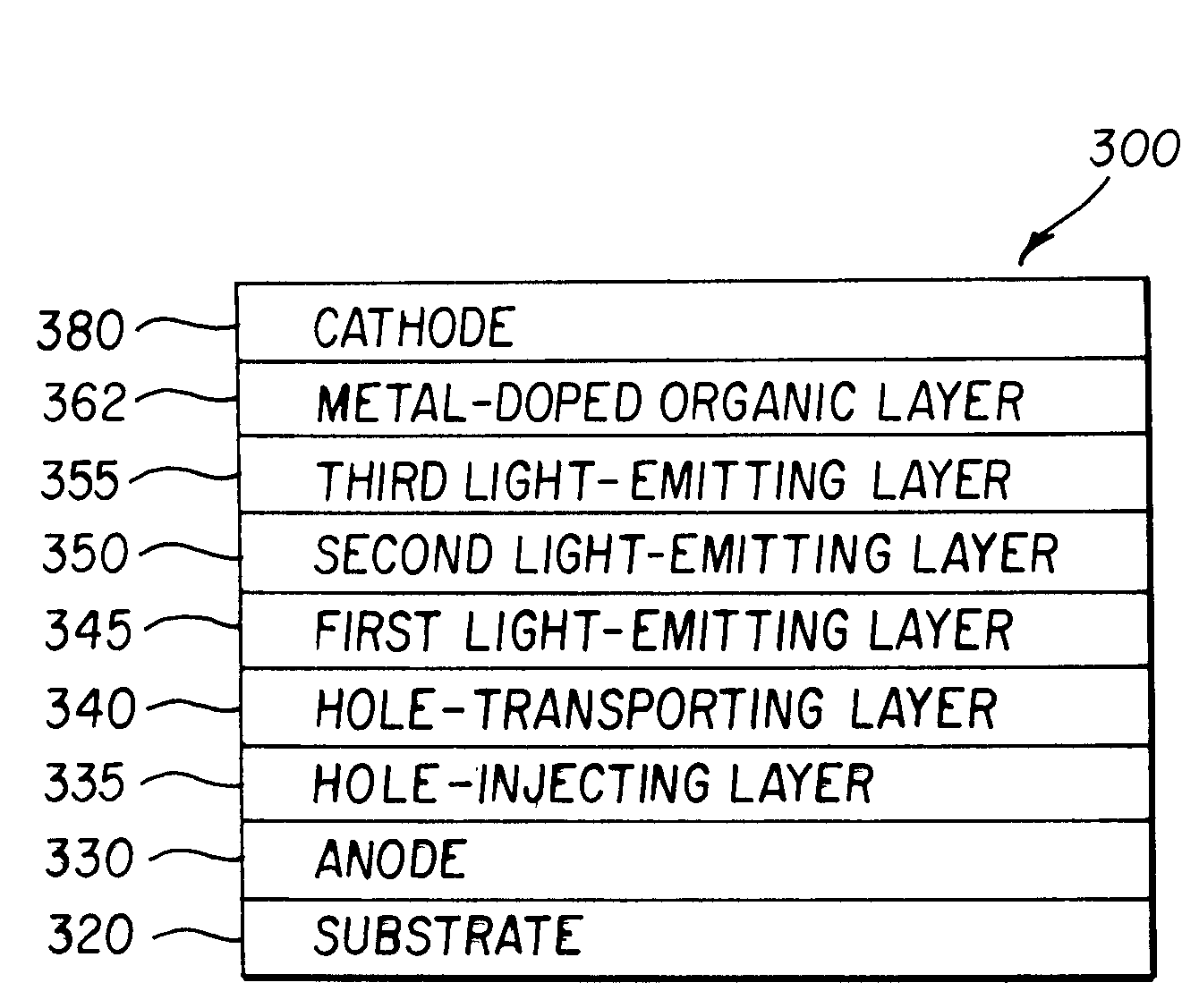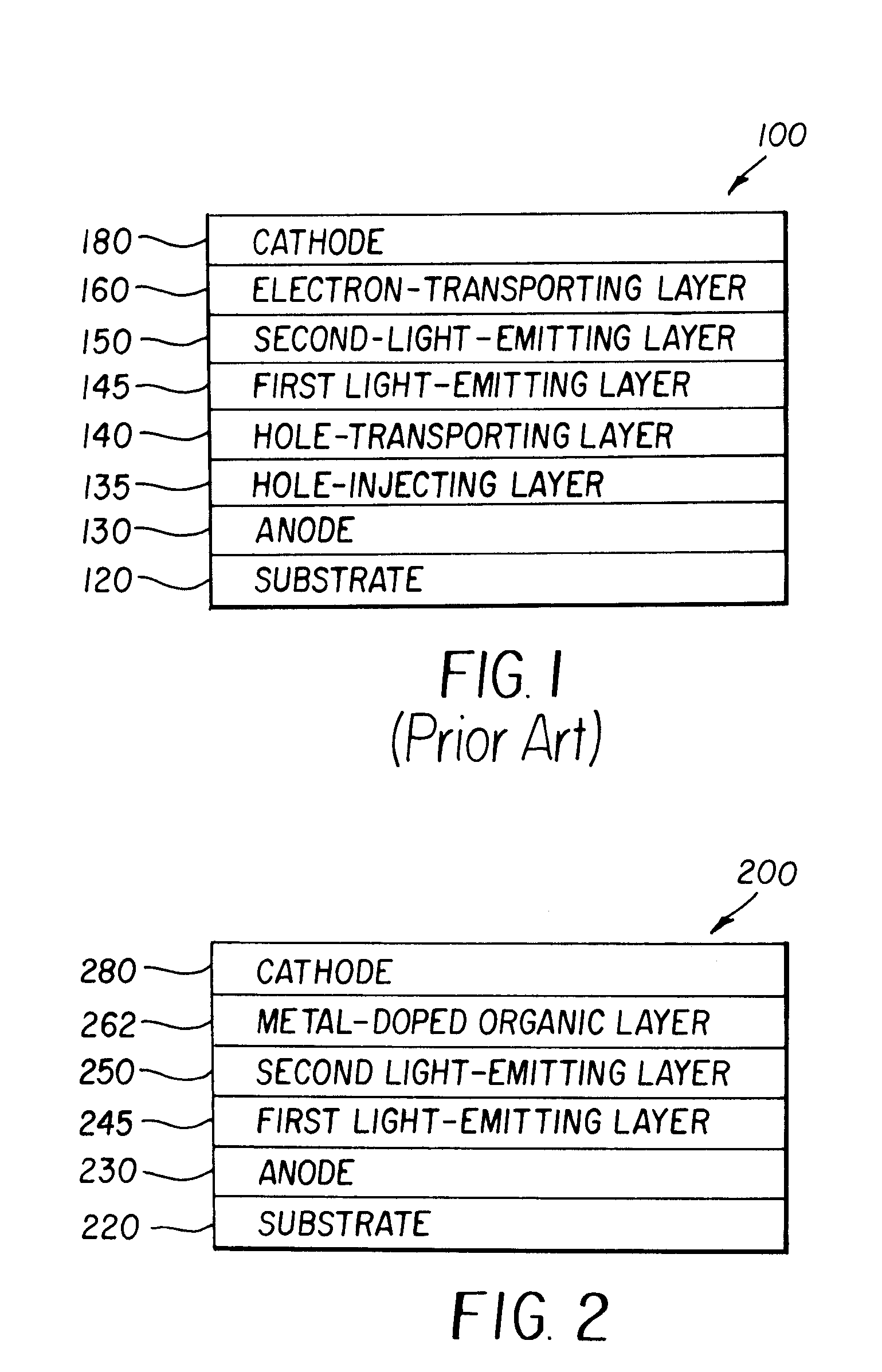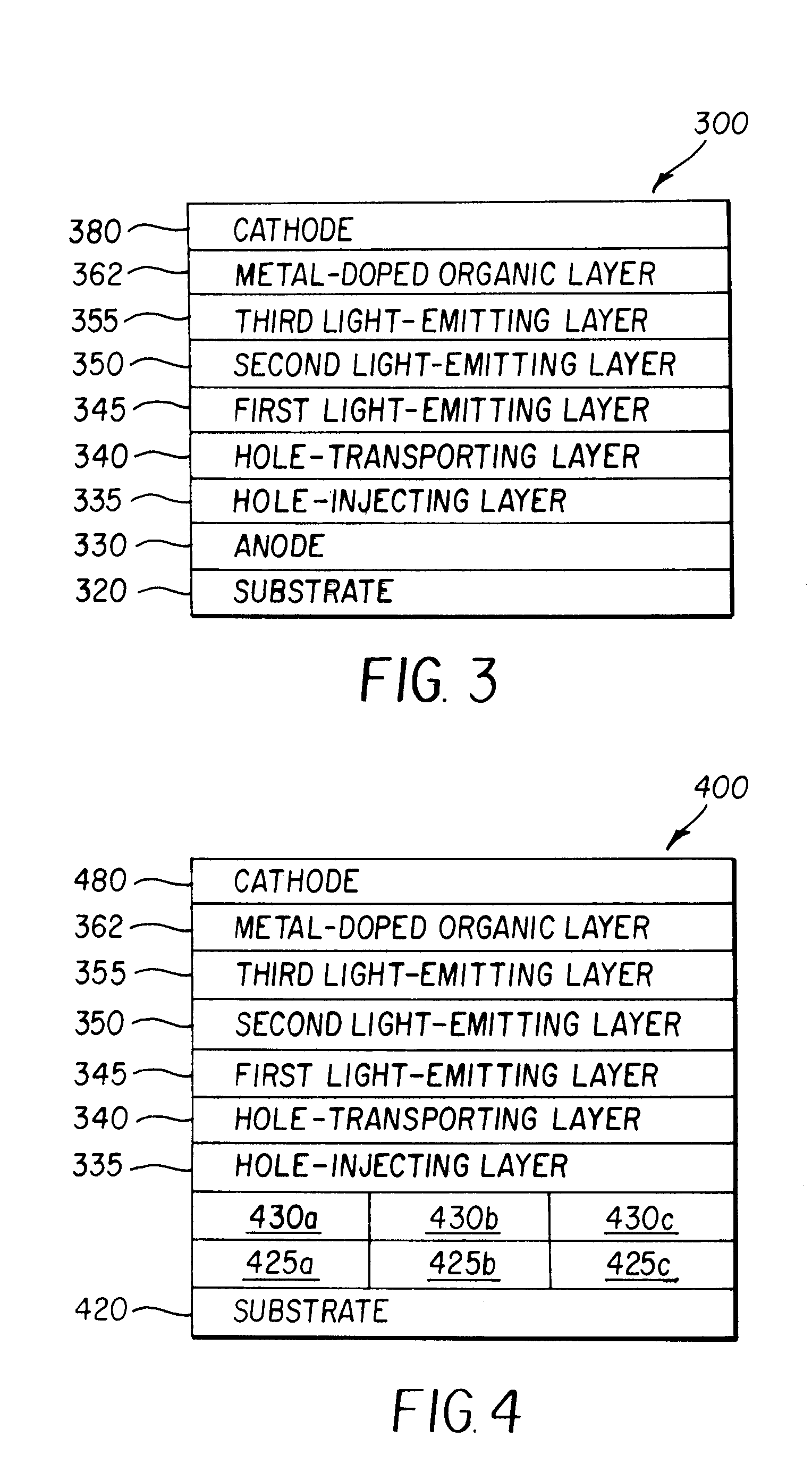OLED device using reduced drive voltage
a technology of oled and drive voltage, which is applied in the direction of discharge tube luminescnet screen, other domestic articles, natural mineral layered products, etc., can solve the problems of diffusive metals and luminescence quenching in oleds, and achieve high operational stability, reduce the drive voltage of the oled, and high luminous efficiency
- Summary
- Abstract
- Description
- Claims
- Application Information
AI Technical Summary
Benefits of technology
Problems solved by technology
Method used
Image
Examples
example 3 (
Inventive)
[0220]An OLED device was constructed in the manner described in Example 1, Steps 1–5; Steps 6–10 were as follows:[0221]6. A 10 nm layer of tris(8-quinolinolato)aluminum (III) (ALQ) was vacuum-deposited onto the substrate at a coating station that included a heated graphite boat source to form a green light-emitting layer;[0222]7. A 10 nm metal-doped organic layer of tris(8-quinolinolato)-aluminum (III) (ALQ) with 1.5% Li was vacuum-deposited onto the substrate at a coating station that included a heated graphite boat source;[0223]8. A 15 nm electron-transporting layer (ETL) of tris(8-quinolinolato)-aluminum (III) (ALQ) was vacuum-deposited onto the substrate at a coating station that included a heated graphite boat source;[0224]9. A 0.5 nm layer of lithium fluoride was evaporatively deposited onto the substrate, followed by a 100 nm layer of aluminum, to form a cathode layer; and[0225]10. The device was then transferred to a dry box for encapsulation.
example 4 (
Inventive)
[0226]An OLED device was constructed in the manner described in Example 1, Steps 1–5; Steps 6–10 were as follows:[0227]6. A 20 nm layer of tris(8-quinolinolato)aluminum (III) (ALQ) was vacuum-deposited onto the substrate at a coating station that included a heated graphite boat source to form a green light-emitting layer;[0228]7. A 10 nm metal-doped organic layer of tris(8-quinolinolato)-aluminum (III) (ALQ) with 1.5% Li was vacuum-deposited onto the substrate at a coating station that included a heated graphite boat source;[0229]8. A 5 nm electron-transporting layer (ETL) of tris(8-quinolinolato)-aluminum (III) (ALQ) was vacuum-deposited onto the substrate at a coating station that included a heated graphite boat source;[0230]9. A 0.5 nm layer of lithium fluoride was evaporatively deposited onto the substrate, followed by a 100 nm layer of aluminum, to form a cathode layer; and[0231]10. The device was then transferred to a dry box for encapsulation.
example 6 (
Inventive)
[0236]An OLED device was constructed in the manner described in Example 1, Steps 1–5; Steps 6–9 were as follows:[0237]6. A 10 nm layer of tris(8-quinolinolato)aluminum (III) (ALQ) was vacuum-deposited onto the substrate at a coating station that included a heated graphite boat source to form a green light-emitting layer;[0238]7. A 25 nm metal-doped organic layer of tris(8-quinolinolato)-aluminum (III) (ALQ) with 1.5% Li was vacuum-deposited onto the substrate at a coating station that included a heated graphite boat source;[0239]8. A 100 nm layer of aluminum was evaporatively deposited onto the substrate to form a cathode layer; and[0240]9. The device was then transferred to a dry box for encapsulation.
Results (Examples 1–6)
[0241]The devices were tested by applying a current across the electrodes of 20 mA / cm2 and measuring the spectrum. The relative luminous efficiency is defined as the luminous efficiency of the example device, in cd / A, divided by the luminous efficiency ...
PUM
| Property | Measurement | Unit |
|---|---|---|
| thickness | aaaaa | aaaaa |
| work function | aaaaa | aaaaa |
| work function | aaaaa | aaaaa |
Abstract
Description
Claims
Application Information
 Login to View More
Login to View More - R&D
- Intellectual Property
- Life Sciences
- Materials
- Tech Scout
- Unparalleled Data Quality
- Higher Quality Content
- 60% Fewer Hallucinations
Browse by: Latest US Patents, China's latest patents, Technical Efficacy Thesaurus, Application Domain, Technology Topic, Popular Technical Reports.
© 2025 PatSnap. All rights reserved.Legal|Privacy policy|Modern Slavery Act Transparency Statement|Sitemap|About US| Contact US: help@patsnap.com



